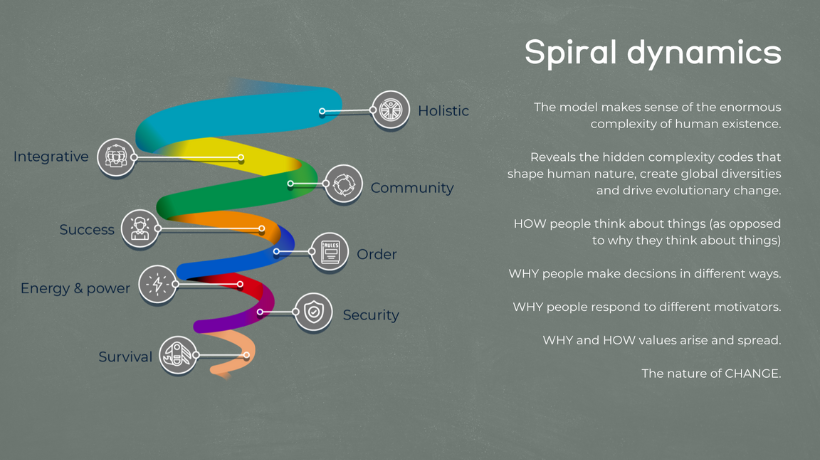Human progress has been nothing short of incredible. Our scientific understanding is mind-boggling, our innovations are spectacular, and for most people, we live with a level of comfort that is higher than at any other time in history.
But something is wrong.
We have skyrocketing rates of suicide, and our planet’s natural processes are in crisis.
The last few Centuries have seen an acceleration of a long history of what regenerative leader Laura Storm describes as the ‘story of separation.’ This period, which includes colonialism and the scientific revolution and then accelerated through the industrial era, has resulted in a general rejection of the nature-centric view, instead favouring a linear, masculine, hierarchical, dominance-driven mindset.
This mindset sees nature as a catalogue of resources. It values only the things that can be measured, consequently causing people to be viewed as ‘consumers.’
These mindsets designed most of our current world, including our economic models, our business management models, and how we lead our organisations. They also shape the types of products we bring to market.
In this world built from 20th-century logic, it’s unsurprising that most successful start-ups have been mechanistic and technical in vision and scope. This model for innovation has been and still is, working pretty well, but I believe its time is up.
We are moving into a very new world, and it’s happening faster than most of us can comprehend. To be, as regenerative leadership author Giles Hutchins calls it, ‘future fit,’ we need to adopt a different approach to business and leadership.
It’s hard not to fall into the trap of thinking that the next exciting revolution will be all about AI. I have no doubt AI will be a significant feature of our new world, but I’m talking about a much more significant societal shift that’s long overdue.
AI is simply the peak of an era in which we mostly valued what we can quantify and measure. It’s a world that runs on algorithms and thinks that salvation lies around the next corner when we have gathered more data and myopically studied every subject in such depth that we can build computer models to predict everything.

We have even convinced ourselves that AI and technology are better than human intelligence. That might be true when humans rely only upon their analytical minds for decision-making. However, for the longest time, humans made decisions based on lineages of wisdom learned through experience and stories, deep silent contemplation in nature, respectful engagement with their community and elders, intuition, mastery of the mind, feedback from the body and prayer—either through an animistic connection to the whole of nature or through the one god in whatever form that took.
In our modern world, we reject such nonsense. I can hear your judgments now. Crikey, she’s obviously ‘one of those’ hippy or spiritual sorts who doesn’t believe in science!
Well, I do believe in science. I rely upon it very heavily in my regenerative agriculture work. Some of my heroes and heroines are scientists, and I greatly respect how far humans have come to understand our world through empirical means.
However, I also try to integrate other forms of decision-making and intelligence, working hard to learn from social and cultural technologies that have been lost to time or oppressed by our contemporary culture’s somewhat limited view of how we should do things!

Many start-ups have tried to break into the regenerative agriculture space in the last few years. Each offers some clever and scalable way of helping regenerative farmers monitor their regenerative outcomes accurately, measure their grass, sell ‘their’ nature in smarter ways, or supplement their livestock to reduce methane emissions.
Some of these innovations are useful and cool, and they appeal to many farmers considering regenerative agriculture at the functional level. However, as our evolving worldview changes how we live, do business, travel, engage with each other, and grow food, the tech that seems so helpful now may not make sense anymore.
Henry Ford illustrated this in the now-famous quote; “If I had asked people what they wanted, they would have said faster horses.”
Regenerative agriculture is part of a broader paradigm shift in society. ‘Regenerative’ is appearing in all aspects of life: regenerative development, regenerative economics, regenerative living, regenerative building, and regenerative business and leadership.
Using the framing of the adult developmental psychological maps from scientists and theorists such as Ken Wilber, Don E. Beck, PhD, and Dr Clare W. Graves, ‘Regenerative’ represents a so-called ‘second tier’ worldview. In the integral and holistic stages we have the ability to integrate all the world views of the first tier, giving us great tolerance and insight but also an expanded capacity for innovation.
With an integrative mindset, we can see that the world is not simply a collection of measurable parts but comprises a series of ‘nested systems’—systems within systems—each displaying properties that cannot be seen in their component parts.
‘Emergent properties become available to us when we see the world and design from a more holistic perspective.
‘Emergent properties’ help organisms in nature adapt to their environment and increase their chances of survival. This sounds like a sound strategy for a start-up to me!

These functions can not be seen by studying individual organisms even in the same conditions.
There are myriad examples of microorganisms that switch functions in response to a change in conditions or under the influence of particular community dynamics.
Nature is dynamic and complex, but it works and has done for millions of years. It has worked everywhere on the planet through every extreme and is still working despite our efforts to destroy it!
Nature could teach us a great deal about designing a start-up and running a business. In our ‘Roots to Regeneration’ program, we use a set of 12 design principles that are inspired by how nature effortlessly runs its highly productive and resilient organisation and we show you how you can apply them to your business.
In the article that inspired this post, Tom Greenwood offers a great example of how a regenerative business might work;
‘’I imagine that if nature were to run one of our human-style businesses, it would measure its success not in its ability to accumulate the tokens that we call money, but on its ability to maximise the potential for life to flourish. That includes the lives of the humans within it, the local ecosystems that they live within, and the totality of life here on Earth (and possibly beyond).
It would not tolerate waste, would be infinitely creative in solving complex problems and would challenge every decision by asking whether it contributes to the overall abundance of life. It would be an intelligent and charismatic leader that is both benevolent and when needed, also ruthless. As the boss, it would not be afraid to say no to many things that we take for granted.
Profit may well be encouraged, since profit is abundance, but nature’s core management principle might well be the prioritisation of balance. It would balance nourishing the individual with the nourishing the whole, balance the short term with the long term, and carefully balance collaboration with competition to maximise the success and efficiency of the system.
Whenever things got out of balance, it would make the hard decisions on where to rein things in and in a worst case scenario, it may even kill off the business in order to maintain the balance of the whole.’’
The regenerative start-up businesses of the future will ensure that they do not design their organisation or product from a limited linear view of how nature and farming work. They will move beyond creating a product for regenerative farmers using the existing extractive business playbook and call themselves a ‘regenerative business.’
A truly regenerative business lives and breathes the principles of living systems in all aspects of its design and operations.

As Forbes magazine puts it, they will move ‘beyond sustainability.’
What if companies reinvented their supply chains and business practices so they function altruistically like a forest? Then they will operate as regenerative businesses that give back 10x and even 100x more to society and the planet than what they take from it.
Whereas a sustainable firm seeks merely to reduce its ecological footprint, a regenerative company boldly seeks to increase its socio-ecological handprint—as Harvard professor Greg Norris puts it—by restoring the health of individuals, communities and the planet. In doing so, regenerative businesses can achieve greater financial performance and impact than their sustainability-focused peers.
